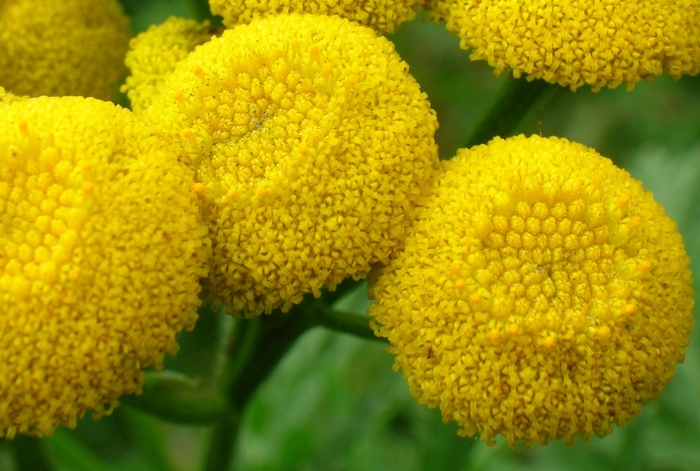Common Tansy
(Tanacetum vulgare)
Common Tansy (Tanacetum vulgare)
/
/

Rosser1954 Roger Griffith
Public domain
Image By:
Rosser1954 Roger Griffith
Recorded By:
Copyright:
Public domain
Copyright Notice:
Photo by: Rosser1954 Roger Griffith | License Type: Public domain | License URL: https://creativecommons.org/public-domain/ | Uploader: Rosser1954 | Publisher: Wikimedia Commons | Title: Close_up_of_Tanacetum_vulgare_flower_head.JPG | Notes: {{Information |Description ={{en|1={{en|1=''[[:en:Hawaiian hibiscus|Hibiscus arnottianus]]'' A. Gray, White Rosemallow; Habitus; [[:en:Jardín Botánico Canario Viera y Clavijo|Jardín Botánico Canario Viera y Clavijo]], [[:en:Gran C...









































































Estimated Native Range
Summary
Tanacetum vulgare, commonly known as Common Tansy, is a deciduous perennial herb native to a wide range of habitats including riverbanks, roadsides, and fields in Europe, East Asia, and Russia’s Far East. It typically grows to a height of 2 to 3 feet (0.6 to 0.9 meters) and spreads about the same in width. The plant features aromatic, fern-like foliage and clusters of bright yellow, button-like flowers that bloom from mid-to-late summer. The flowers are showy and attract a variety of insects. The scent of Tansy is reminiscent of camphor with hints of rosemary.
Common Tansy is valued for its ornamental flowers and as a traditional medicinal herb, despite its toxicity when consumed in large quantities. The volatile oil in the leaves and flowers contains compounds such as thujone, which can be harmful. It is used in gardens for its pest-repellent properties and sometimes planted in herb gardens or as a companion plant. Tansy requires minimal care, thriving in full sun to part shade and tolerating a range of soil types, from slow to fast-draining. It is drought-tolerant once established. However, gardeners should be cautious as Tansy can become invasive, spreading aggressively by rhizomes and seeds, particularly in California and other parts of North America where it is not native. It is important to manage its spread to prevent it from becoming a problem in non-native ecosystems.CC BY-SA 4.0
Common Tansy is valued for its ornamental flowers and as a traditional medicinal herb, despite its toxicity when consumed in large quantities. The volatile oil in the leaves and flowers contains compounds such as thujone, which can be harmful. It is used in gardens for its pest-repellent properties and sometimes planted in herb gardens or as a companion plant. Tansy requires minimal care, thriving in full sun to part shade and tolerating a range of soil types, from slow to fast-draining. It is drought-tolerant once established. However, gardeners should be cautious as Tansy can become invasive, spreading aggressively by rhizomes and seeds, particularly in California and other parts of North America where it is not native. It is important to manage its spread to prevent it from becoming a problem in non-native ecosystems.CC BY-SA 4.0
Plant Description
- Plant Type: Herb
- Height: 1-3 feet
- Width: 0.8-1.5 feet
- Growth Rate: Rapid
- Flower Color: Yellow
- Flowering Season: Summer
- Leaf Retention: Deciduous
Growth Requirements
- Sun: Full Sun, Part Shade
- Water: Medium
- Drainage: Slow, Medium, Fast
Common Uses
Bee Garden, Border Plant, Butterfly Garden, Deer Resistant, Drought Tolerant, Erosion Control, Fragrant, Potted Plant, Rabbit Resistant, Rock Garden, Showy Flowers
Natural Habitat
Riverbanks, roadsides, and fields in Europe, East Asia, and Russia’s Far East
Other Names
Common Names: Bitter Buttons, Cow Bitter, Tansy, Golden Buttons, Golden-Buttons, Garden Tansy, Rejnfan, Rainfarn, Strahlenlose Wucherblume, Tanaceto
Scientific Names: , Tanacetum vulgare, Tanacetum vulgare f. vulgare, Tanacetum vulgare subsp. boreale, Tanacetum vulgare var. crispum, Chrysanthemum tanacetum, Tanacetum vulgare var. vulgare,
GBIF Accepted Name: Tanacetum vulgare L.